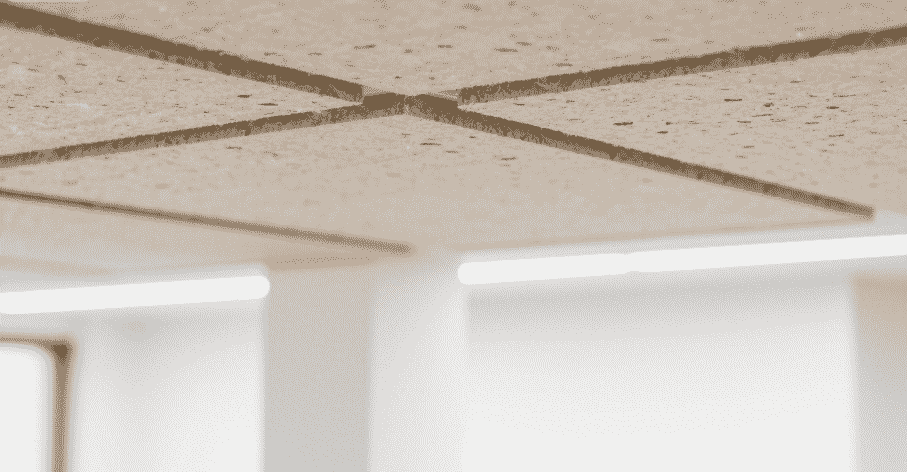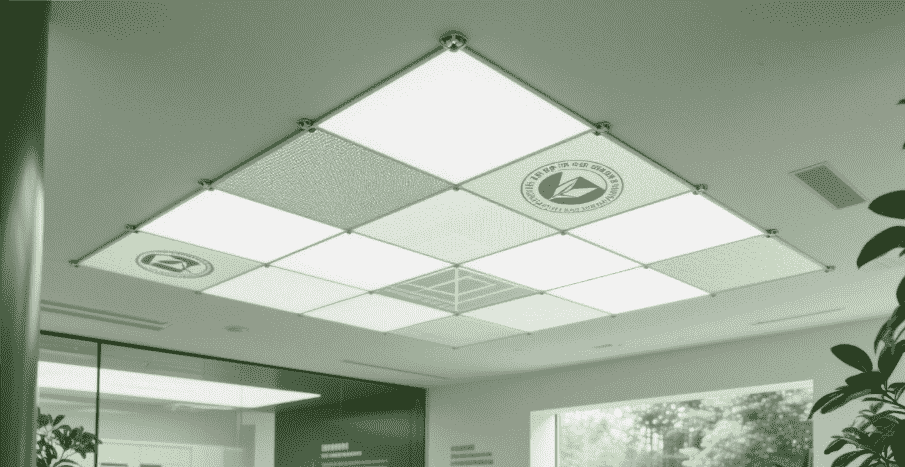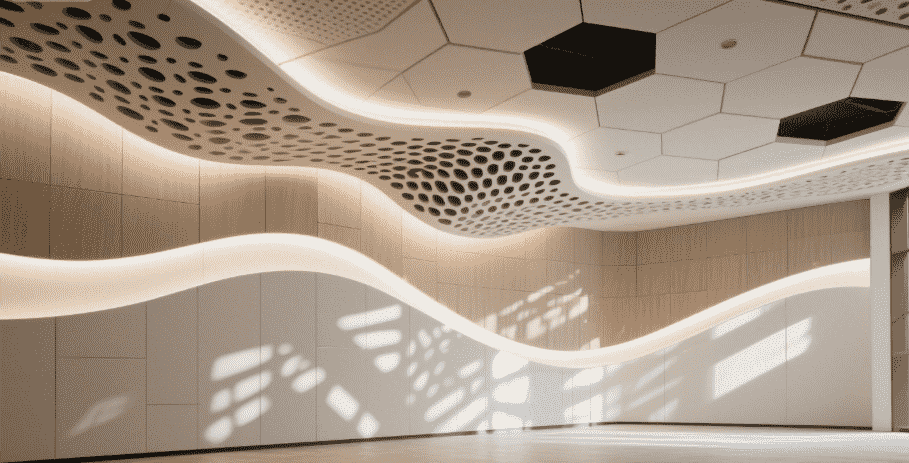Table of Contents
Introduction
In today’s world, sustainability is no longer a choice but a necessity for businesses looking to stay ahead in a rapidly evolving marketplace. With increased focus on eco-friendly practices, businesses are seeking solutions that can reduce their carbon footprint while maintaining high performance. Acoustical ceiling panels, traditionally used for sound control and aesthetic appeal, are now becoming a focal point in sustainable building design.
Sustainable acoustical ceiling panels offer not only excellent sound absorption but also contribute to environmental goals. As companies and commercial spaces strive to meet green building standards, the role of eco-friendly acoustical panels is expanding. In this blog, we will discuss four innovative trends shaping the future of acoustical ceiling panels, highlighting how they can meet both sustainability and acoustic performance goals.
Shandong Panel International Trade Co., Ltd. has been a leader in providing high-quality, eco-friendly acoustic panels, including polyester fiber-wood strip acoustic panels, which combine sound absorption technology with renewable materials to meet the needs of businesses worldwide.
Trend 1. Recycled and Eco-friendly Materials: Leading the Way in Sustainable Acoustical Ceiling Panels

The use of recycled materials in acoustical ceiling panels is becoming more prevalent as manufacturers embrace sustainable practices. Recycled polyester fibers, wood-based products, and even biodegradable materials are now being used to create high-performance acoustical panels that help reduce the environmental impact of building projects.
Why Recycled Materials Are Key to Sustainability
The move toward eco-friendly acoustical ceiling panels is driven by the global need to reduce waste and conserve natural resources. By using recycled and sustainable materials, businesses can lower their environmental footprint. These materials are often just as durable and effective as their non-recycled counterparts, offering the same high-quality acoustical performance.
Our polyester fiber-wood strip acoustic panels are made from renewable materials, ensuring that each panel not only reduces noise but also helps minimize waste in construction projects.
Benefits of Recycled Materials
- Environmentally friendly: Reduces landfill waste and conserves natural resources.
- Energy-efficient production: Uses less energy than manufacturing new materials.
- Compliance with green building standards: Meets various certification criteria, including LEED (Leadership in Energy and Environmental Design).
- Long-term sustainability: Supports a circular economy by reusing materials.
Trend 2. Eco-friendly Certifications and Acoustical Ceiling Panels in Green Building Projects

As businesses aim to meet rigorous green building standards, acoustical ceiling panels are increasingly being selected based on their sustainability credentials. Whether it’s for new construction projects or building renovations, selecting eco-certified panels can help businesses achieve green building certifications like LEED, BREEAM, and WELL.
How Acoustical Ceiling Panels Contribute to Green Building Certifications
To achieve these certifications, building materials must adhere to strict environmental performance criteria. Sustainable acoustical ceiling panels contribute to these requirements by offering benefits such as:
- Reduced carbon emissions during production.
- Lower energy consumption in building operations due to insulation properties.
- Reduced indoor air pollutants, as many green panels are made with low VOC (volatile organic compounds) materials.
At Shandong Panel International Trade Co., Ltd., our polyester fiber-wood strip acoustic panels are designed with eco-certifications that help building owners achieve their sustainability goals while improving the acoustics of their spaces.
LEED and Sustainability Benefits of Acoustical Ceiling Panels:
- Energy efficiency: Contributes to energy savings by improving insulation.
- Indoor air quality: Panels made with low-emission materials enhance indoor air quality.
- Reduced environmental impact: Contributes to reducing overall carbon footprint.
Trend 3. Innovations in Acoustic Performance and Aesthetic Design

Aesthetic appeal is becoming increasingly important in the design of acoustical ceiling panels, especially as businesses look to enhance the visual appeal of their spaces while maintaining high performance. Innovations in design are allowing acoustical ceiling panels to blend seamlessly with any interior, contributing both to sound control and the overall look of the room.
Combining Sound Control with Modern Design
Today’s acoustical ceiling panels are not only functional but also visually appealing. Designers are now incorporating sleek, modern finishes such as wood slats, fabric-wrapped panels, and custom colors to offer versatile and stylish options for businesses.
Our polyester fiber-wood strip acoustic panels offer a perfect example of how acoustic performance can be combined with modern aesthetics. These panels are ideal for a variety of commercial spaces, from corporate offices to high-end retail stores, where both acoustics and appearance matter.
Benefits of Aesthetic Innovation:
- Customization: Panels are available in a variety of colors, designs, and textures to suit the interior of any space.
- Architectural enhancement: Adds a modern and stylish look while providing excellent noise control.
- Improved productivity: Creating a visually pleasing space can positively impact employee mood and performance.
Trend 4. Energy-Efficiency and Insulation with Sustainable Acoustical Ceiling Panels
The energy efficiency of buildings is becoming an increasing priority for businesses looking to minimize their environmental impact. Acoustical ceiling panels play a critical role in reducing energy consumption by enhancing the thermal insulation of a building. These panels help maintain a consistent indoor temperature, reducing the need for excessive heating and cooling.
Acoustical Ceiling Panels with Insulating Properties
Sustainable acoustical ceiling panels are now being designed to offer more than just noise reduction—they also act as thermal insulators. By enhancing a building’s thermal resistance, these panels help reduce energy consumption, leading to lower utility costs and improved energy performance.
At Shandong Panel International Trade Co., Ltd., our polyester fiber-wood strip acoustic panels not only provide outstanding sound absorption but also contribute to better insulation, helping businesses reduce their energy bills while improving the overall comfort of their spaces.
Energy-Efficiency Benefits:
- Reduces heating and cooling demands: Helps maintain a consistent indoor temperature with less energy.
- Cost savings: Lower utility costs from improved thermal insulation.
- Eco-friendly: Reduces the building’s carbon footprint by lowering energy consumption.
Comparison of Sustainable Acoustical Ceiling Panels
| Feature | Polyester Fiber-Wood Strip Panels | Traditional Acoustic Panels |
|---|---|---|
| Material Type | Recycled polyester, wood-based | Synthetic or non-recycled materials |
| Acoustic Performance | Excellent sound absorption | Standard sound absorption |
| Energy Efficiency | Improves insulation, energy-saving | Limited insulation properties |
| Customization Options | Custom colors, wood slats, textures | Limited design flexibility |
| Sustainability | Made from renewable materials | Often uses synthetic materials |
| Certifications | Green building standards compliant | May not meet green standards |
Conclusion
The future of sustainable acoustical ceiling panels is driven by innovations in material sourcing, design, and energy efficiency. As businesses increasingly prioritize sustainability, these panels offer a solution that not only improves acoustic performance but also reduces environmental impact. From recycled materials to energy-saving properties, sustainable acoustical ceiling panels are becoming an integral part of green building projects, helping businesses meet both their environmental and operational goals.
At Shandong Panel International Trade Co., Ltd., we are proud to offer polyester fiber-wood strip acoustic panels that provide superior acoustic performance while supporting your sustainability efforts. With eco-friendly materials and customized design options, our panels offer an ideal solution for businesses looking to create sustainable, acoustically optimized spaces.
FAQ
What are the benefits of using sustainable acoustical ceiling panels?
Sustainable acoustical ceiling panels help reduce waste, improve energy efficiency, and contribute to green building certifications. They also enhance sound quality and create aesthetically pleasing environments.
Can acoustical ceiling panels contribute to energy savings?
Yes, acoustical ceiling panels with insulating properties help reduce heating and cooling needs, which can lower energy consumption and reduce utility costs.
What materials are used in eco-friendly acoustical ceiling panels?
Eco-friendly panels are often made from recycled polyester fibers, wood-based products, and low-emission materials. These materials contribute to sustainability while maintaining high performance.
How can I customize acoustical ceiling panels for my space?
Many acoustical ceiling panels offer customization options such as color, texture, and material finishes. Shandong Panel International Trade Co., Ltd. offers a range of customization options for our polyester fiber-wood strip acoustic panels.
Where can I use sustainable acoustical ceiling panels?
These panels are ideal for a wide range of applications, including commercial spaces (offices, conference rooms), residential areas (home theaters, living rooms), and institutional environments (schools, hospitals).
Are sustainable acoustical ceiling panels suitable for high-traffic areas?
Yes, sustainable panels are durable and suitable for high-traffic areas. Their materials are designed to withstand wear and tear, making them ideal for spaces with high foot traffic, such as retail stores, office buildings, and schools.
Do sustainable acoustical ceiling panels help with noise control?
Absolutely! Sustainable acoustical ceiling panels are specifically designed to reduce noise and improve sound quality. They are highly effective in minimizing echo, reducing background noise, and improving overall acoustics in spaces such as meeting rooms, classrooms, and restaurants.
Are there any maintenance requirements for sustainable acoustical ceiling panels?
While sustainable acoustical ceiling panels are low-maintenance, regular cleaning and care are recommended to ensure optimal performance. These panels can typically be wiped down with a damp cloth to remove dust and debris. Some panels may require periodic inspection to maintain their acoustic efficiency.
Let’s Keep in Touch! 🌟

Thanks for reading—I’m glad you joined me on this journey!
If you found this content valuable, insightful, or thought-provoking, I’d love to hear your thoughts.
📘 Follow me on Facebook for exclusive tips, behind-the-scenes insights, and community discussions.
👉 Click here to connect
Feel free to share your feedback or questions in the comments or on social media—I’m always here to chat.
Let’s keep exploring, learning, and growing—together! 🚀😊
